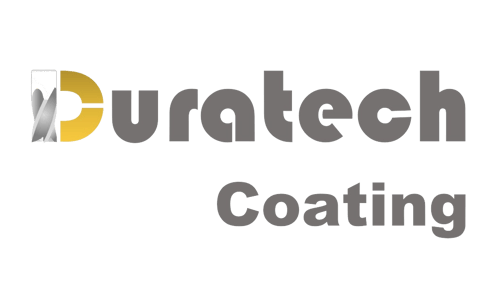Coating Technologies
Nitriding, PVD Coating and Electroplating are the three major industrial surface treatment processes used to enhance the properties of materials improving wear resistance, surface hardness and corrosion resistance.
PVD - Physical Vapor Deposition, is a technology used to deposit materials (commonly referred to as targets or coating materials) as gaseous molecules, atoms, or ions under vacuum conditions, and then deposit them onto a workpiece to form thin films with specific functionalities. The advantages of PVD technology include fast deposition rates, zero pollution, and the ability to deposit various types of films with different properties, such as metal films, oxide films, nitride films, etc. Common PVD deposition techniques include evaporation, sputtering, and arc deposition.
Nitriding is a thermochemical process that involves diffusing nitrogen into the surface of a metal to form nitrides, typically through exposure to ammonia gas or nitrogen-rich environments at elevated temperatures. Nitriding is primarily specific to ferrous metals improves surface hardness, wear resistance, fatigue strength, and corrosion resistance. It can also enhance the surface's resistance to galling and seizure.
Electroplating is an electrolytic process that deposits metallic coating onto a wide range of substrates by immersing the substrates in an electrolyte solution containing dissolved metal ions, and an electric current is passed through the solution to deposit the metal ions onto the substrate. Electroplating provides improved surface properties such as corrosion resistance, wear resistance, conductivity, and aesthetics. It can also be used for decorative purposes and to enhance solderability or adhesion.
PVD Technology
Physical Vapor Deposition (PVD) is a process of depositing and characterizing functional material layers on a solid metal surface. The process is carried out under high vacuum conditions using a cathodic arc sources, the gas is introduced into a vacuum chamber which is ionized into a plasma that contained energetic ions which have enough energy to physically dislodge solid particles of a target material and accelerate these particles towards a substrate.
PVD Coating Process
The parts to be coated are first cleaned. The cleaning process varies depending on the level of quality from the electroplater, substrate material and geometry.
(1). The target material to be deposited is converted into vapor by physical deposition means.
(2). The vapor is transported across a region of low pressure from its target source to the substrate.
(3). The vapor undergoes condensation on the substrate to form the thin film.
PVD Coating Features & Benefits
Tool life increases 50% - 500% depending on type of PVD coating application.
Fewer tool changes and less downtime on machine.
Faster speeds and higher feed rates on cutting tools.
Increases productivity, save costs of machining.
Eliminate galling & die polishing in forming & stamping.
Reduces corrosion & erosion in molding.
Allows dry (or near dry) machining in certain operations Decreases coolant disposal.
Frequently Asked Questions
What is PVD coating?
Physical Vapor Deposition (PVD) Coating refers to a variety of vacuum deposition methods which can be used to produce thin films and coatings on substrates including metals, ceramics, glass, and polymers. PVD is characterized by a process in which the material transitions from a condensed phase to a vapor phase and then back to a thin film condensed phase.
How long is the PVD history ?
It has been formally recognized and widely used since 1985
What is the difference between PVD and CVD ?
CVD is chemical vapor deposition. It is used only for carbide tools coated with a greater thickness for operation at higher temperature. In comparison, PVD can coat a high quality thin film along at various temperature.
What industries can PVD best used for?
All kinds of hardware tools, cutting tools and molds. Depends on the type, PVD is also used on medical, jewelry, valves, pipeline and even firearms
What's the thickness of PVD coating?
An average of 2.5-5.0 micron is standard. (25 microns = 0.001 inch, 1 micron = 1/1000cm, human hair = 50-100 microns)
Can parts with PVD coating be recoated?
Yes, but increased film stress due to thickness that may cause failures on coated areas.
What kind of tools should be coated?
Turning, profiling, grooving, threading, drilling, tapping, reaming, broaching, milling.
What kinds of materials can be coated?
Carbon, alloy steels, cast irons, stainless steels, super alloys, carbide etc. Cathodic Arc PVD coating are applied at around 800F.
